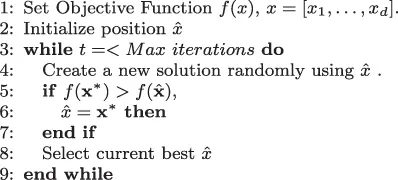
A Practical Approach to Metaheuristics using LabVIEW and MATLAB®
- 160 pages
- English
- ePUB (mobile friendly)
- Available on iOS & Android
A Practical Approach to Metaheuristics using LabVIEW and MATLAB®
About This Book
Metaheuristic optimization has become a prime alternative for solving complex optimization problems in several areas. Hence, practitioners and researchers have been paying extensive attention to those metaheuristic algorithms that are mainly based on natural phenomena. However, when those algorithms are implemented, there are not enough books that deal with theoretical and experimental problems in a friendly manner so this book presents a novel structure that includes a complete description of the most important metaheuristic optimization algorithms as well as a new proposal of a new metaheuristic optimization named earthquake optimization. This book also has several practical exercises and a toolbox for MATLAB® and a toolkit for LabVIEW are integrated as complementary material for this book. These toolkits allow readers to move from a simulation environment to an experimentation one very fast. This book is suitable for researchers, students, and professionals in several areas, such as economics, architecture, computer science, electrical engineering, and control systems.
The unique features of this book are as follows:
- Developed for researchers, undergraduate and graduate students, and practitioners
-
- A friendly description of the main metaheuristic optimization algorithms
-
- Theoretical and practical optimization examples
-
- A new earthquake optimization algorithm
-
- Updated state-of-the-art and research optimization projects
-
The authors are multidisciplinary/interdisciplinary lecturers and researchers who have written a structure-friendly learning methodology to understand each metaheuristic optimization algorithm presented in this book.
Frequently asked questions
Information
II
Metaheuristic Optimization
CHAPTER 3
Basic Metaheuristic Optimization Algorithms
3.1 Exhaustive Search
3.2 Random Optimization

3.3 Nelder-Mead Algorithm
- Reflection
- Expansion
- Contraction
- Shrinking.
Table of contents
- Cover
- Half Title
- Title Page
- Copyright Page
- Table of Contents
- List of Figures
- List of Tables
- Foreword
- Preface
- Authors
- Section I Basis
- Section II Metaheuristic Optimization
- Appendix
- Bibliography
- Index